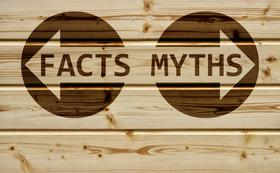- Washington State Community College will enrich the lives of students, families, and the community through education, training, community service and cultural activities.
School Highlights
Washington State Community College serves 2,538 students (33% of students are full-time).
The college's student-teacher ratio of 16:1 is lower than the state community college average of 22:1.
Minority enrollment is 12% of the student body (majority Black and Hispanic), which is less than the state average of 38%.
Quick Facts (2025-26)
- Enrollment: 2,538 students
- In-state tuition: $4,235
- Out-state tuition: $8,315
- Student-teacher ratio: 16:1
- Minority enrollment: 12%
- Source: Integrated Postsecondary Education Data System (IPEDS)
School Overview
The teacher population of 158 teachers has stayed relatively flat over five years.
Washington State Community College
(OH) Community College Avg.
Carnegie Classification
Associate's Colleges: High Career & Technical-High Nontraditional
Baccalaureate/Associate's Colleges: Mixed Baccalaureate/Associate's
Institution Level
Four or more years
At least 2 but less than 4 years
Institution Control
Public
Private not-for-profit
Total Faculty
158 staff
93 staff
School Calendar
Student Body
The student population of Washington State Community College has grown by 33% over five years.
The student-teacher ratio of 16:1 has increased from 12:1 over five years.
The Washington State Community College diversity score of 0.21 is less than the state average of 0.58. The school's diversity has grown by 116% over five years.
Total Enrollment
2,538 students
757 students
Student-Teacher Ratio
16:1
22:1
# Full-Time Students
837 students
397 students
# Part-Time Students
1,701 students
360 students
# Enrollment Undergraduate
253 students
313 students
# Full-Time Undergraduate Students
837 students
385 students
# Full-Time Graduate Students
n/a
10 students
# Part-Time Undergraduate Students
1,701 students
434 students
# Part-Time Graduate Students
n/a
3 students
Total Dormitory Capacity
n/a
425 students
% American Indian/Alaskan
1%
n/a
% Asian
1%
4%
% Hispanic
2%
6%
% Black
2%
15%
% White
88%
62%
% Hawaiian
n/a
2%
% Two or more races
2%
4%
% Non Resident races
1%
1%
% Unknown races
3%
6%
Diversity Score
0.21
0.58
College Completion Rate (Students who graduate in less than 4 years)
37%
54%
College Completion Rate (Students who graduate in 4 years or more than 4 years)
n/a
22%
Average Graduate Earnings (10 Years)
$29,900
$31,900
Tuition and Acceptance Rate
The public in-state tuition of $4,235 is less than the state average of $5,163. The in-state tuition has grown by 6% over four years.
The public out-state tuition of $8,315 is less than the state average of $10,843. The out-state tuition has grown by 108% over four years.
In-State Tuition Fees
$4,235
$5,163
Out-State Tuition Fees
$8,315
$10,843
Tuition Notes
instate, out of stat
% Students Receiving Some Financial Aid
83%
88%
Median Debt for Graduates
$11,411
$18,500
Median Debt for Dropouts
$5,250
$6,500
Acceptance Rate
n/a
73%
SAT Reading
n/a
460
SAT Math
n/a
475
SAT Writing
n/a
465
ACT Composite
n/a
21
ACT English
n/a
20
ACT Math
n/a
20
Source: 2024 (or latest year available) Integrated Postsecondary Education Data System (IPEDS) , School Administrators
School Notes
- Washington State Community College is a state-assisted, two-year comprehensive community college offering over 50 programs of study. The designated service area of the College includes Washington and Morgan Counties, but a significant number of students from across southeastern Ohio and nearby counties in West Virginia also are enrolled. The College was founded in 1971 as Washington Technical Institute with its one building campus located on St. Rt. 676 in Marietta. In 1972 the name became Washington Technical College as part of a reorganization of Ohio's higher education system. In 1991, the College was re-chartered as Washington State Community College and at the same time relocated to its current campus at 710 Colegate Drive in Marietta. The Washington State campus, which opened with one building in 1991, has grown to include six structures: the Main Building, Arts & Sciences Center, Carson K. Miller Library, Center for Business and Technology, Evergreen Child Development Center, and a maintenance building. The College occupies nearly 155 acres of wooded land. In 2004, the College created a master plan for campus growth with a vision for addition of a conference center, an Appalachian arts center with an amphitheater, and a health sciences building, as well as improvements to the campus entrances and parking. The College is accredited by the Higher Learning Commisions and offers transfer programs as well as applied/technical programs in business, engineering/industrial technologies, health sciences, and public services.
Frequently Asked Questions
How much does Washington State Community College cost?
Washington State Community College's tuition is approximately $4,235 for In-State students and $8,315 for Out-State students.
Recent Articles

The Rise of Technical and Vocational Training in 2025
Explore the 2025 surge in technical and vocational training—enrollment, policy, costs, and why this path is gaining ground for students and parents.

Stackable Credentials: How Community Colleges Advance Careers
Discover how community colleges use stackable credentials to build career pathways, boost earnings, and enable lifelong learning in 2025.

High-Paying Jobs You Can Get with a Community College Degree
Discover top high-paying careers you can launch in 2025 with a community college (associate) degree and high-growth credentials in tech, healthcare and trades.










